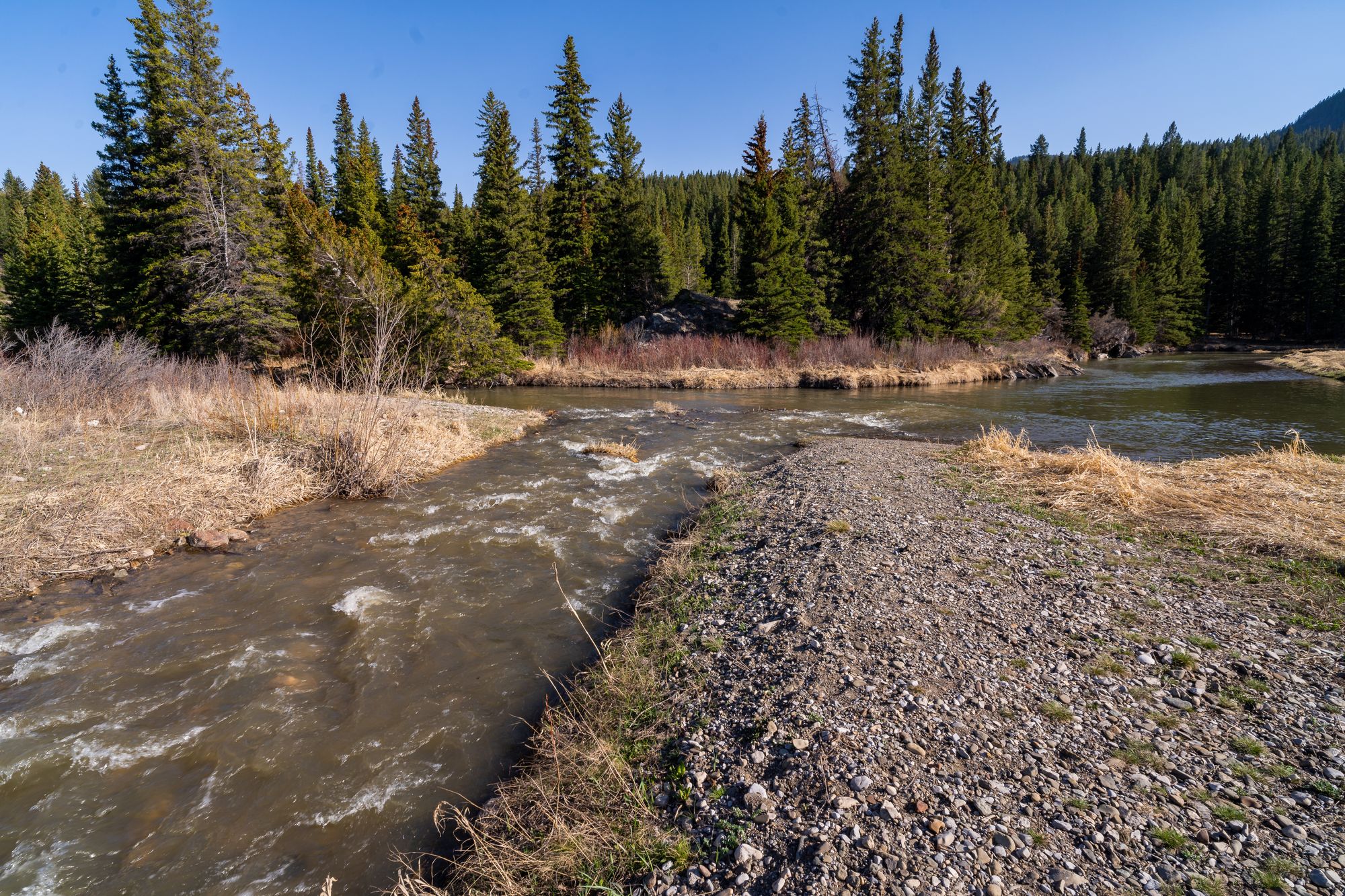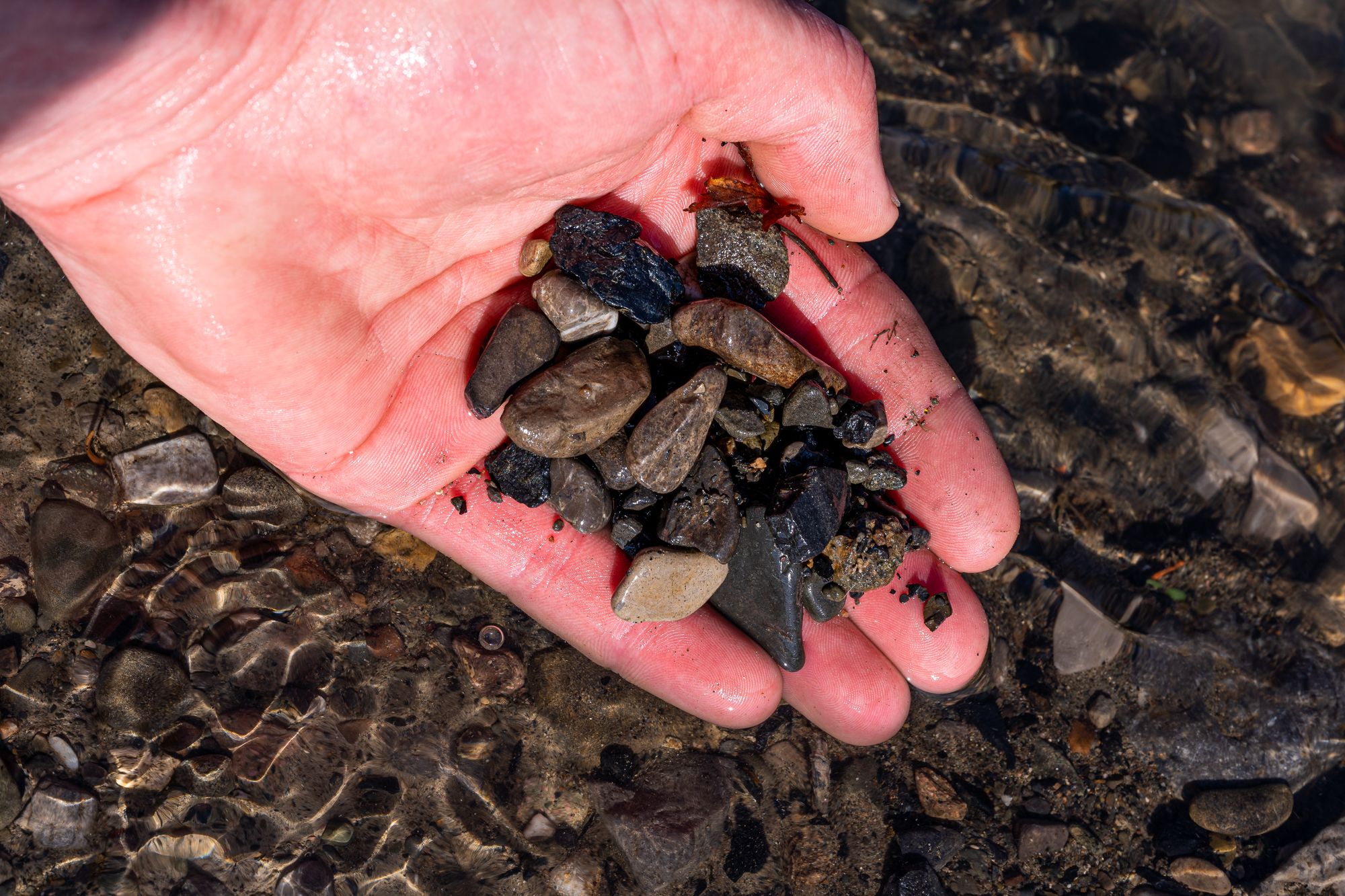Spring Spawning

Most people have watched the Discovery Channel and know how salmon and trout spawn.
You will have seen videos of large salmon digging with their tails to make a pile of loose gravel into which they deposit their sperm and eggs.
You might even know that these nests are called redds.
Maybe you have even seen the large redds that bull trout or brown trout make in the fall in our area.
In the clear waters of fall these redds can be very obvious because these fall spawners sweep up gravel with their tail fins.
This results in the darker coloured sediments being brushed away and the thin layer of algae that coats the gravel being washed off.
This makes a bright patch of gravel that contrasts against its surroundings.
A dramatic example of spawning redds are the giant craters made by chinook salmon that you may have stumbled in while fishing for steelhead in BC and wondered what is going on.
To understand more about when and where trout and salmon spawn this article by hatch magazine gives a pretty good overview.
West Slope Cutthroat and Rainbow Trout Spawning
However, if you are like me, you may not be sure about the less obvious spawning activities of spring spawners like Cutthroat Trout or Rainbow Trout that occur here in SW Alberta.
You might even assume, like me again, that the season opening in the middle of June was designed to avoid the spawning season and we do not need to worry about disrupting these spring spawners.
To learn more I called a fishery biologist familiar with this part of the world and I was shocked by some of the discoveries made.
Rainbows typically spawn earlier than Westslope Cutthroat Trout. And for that reason they are less vulnerable.
But according to my source, Westslope Cutthroat Trout will move from larger streams and rivers into the smaller headwater tributaries as soon as the spring freshet happens (a freshet is the dramatic increase in stream flow when the higher elevation snow pack begins to melt) and begin preparing to spawn.

The timing of the spring freshet varies from year to year and actively spawning Cutthroat Trout can occur in these small streams after the middle of June which of course is during the start of the fishing season.
This was an OH WOW moment for me because I was under the assumption that this would have already occurred.
The next OH WOW moment was learning that the eggs from these spring spawners do not hatch out until much later, in fact for Westslope Cutthroat Trout it could be as late as the last half of August!
That means if you are wading in these streams during the summer, you stand a good chance of stepping on a redd full of eggs.
Do not delude yourself into thinking that you will be able to see them – these redds are very subtle and almost impossible to see.
It is safest to assume that if there is appropriate gravel combined with flowing water then a trout could have spawned there.

In my research I found that trout and salmon use gravel with diameters ranging from 5.4 to 78 mm, with 50% falling between 14.5 and 35 mm.
And these areas do not necessarily need to be large, particularly in the small streams that these trout are using.
My final OH WOW was that spawning trout can also use the larger streams and rivers to spawn in but this is not as well understood.
In this case avoiding areas with the right type of spawning gravel would be good.
These would be areas such as the tail outs of runs and pools or side channels that have good gravel and appropriate flow.
What can we do about it?
If you are like me, you will have appreciated the recent simplification of the fishing regulations on rivers like the Bow and Crowsnest Rivers.
But the flip-side to less rules and regulations is the importance of us as individuals taking responsibility for our precious trout streams.
Here are a few suggestions:
- Only wade when absolutely necessary. It should be a straight forward to cast from shore on small tributary streams even for anglers that are new to the sport.
- When crossing, pick areas that do not have gravel.
- Consider not fishing these small headwater streams until after the middle of July.
- But not everyone has the luxury of choosing when we can go fishing and there will be times when the streams and rivers are blown out but these small streams are fishable. If you find yourself needing to fish these streams during this time of year, handle the fish gently, try not to lift them out of the water by their bellies (remember they could be full of milt and eggs).
I hope this has helped you. I know the research for this piece will help me be a more aware angler.
You can also check out, and support if you choose, organizations like Mind The Redd who help promote awareness about spawning trout and spawning areas.

Member discussion